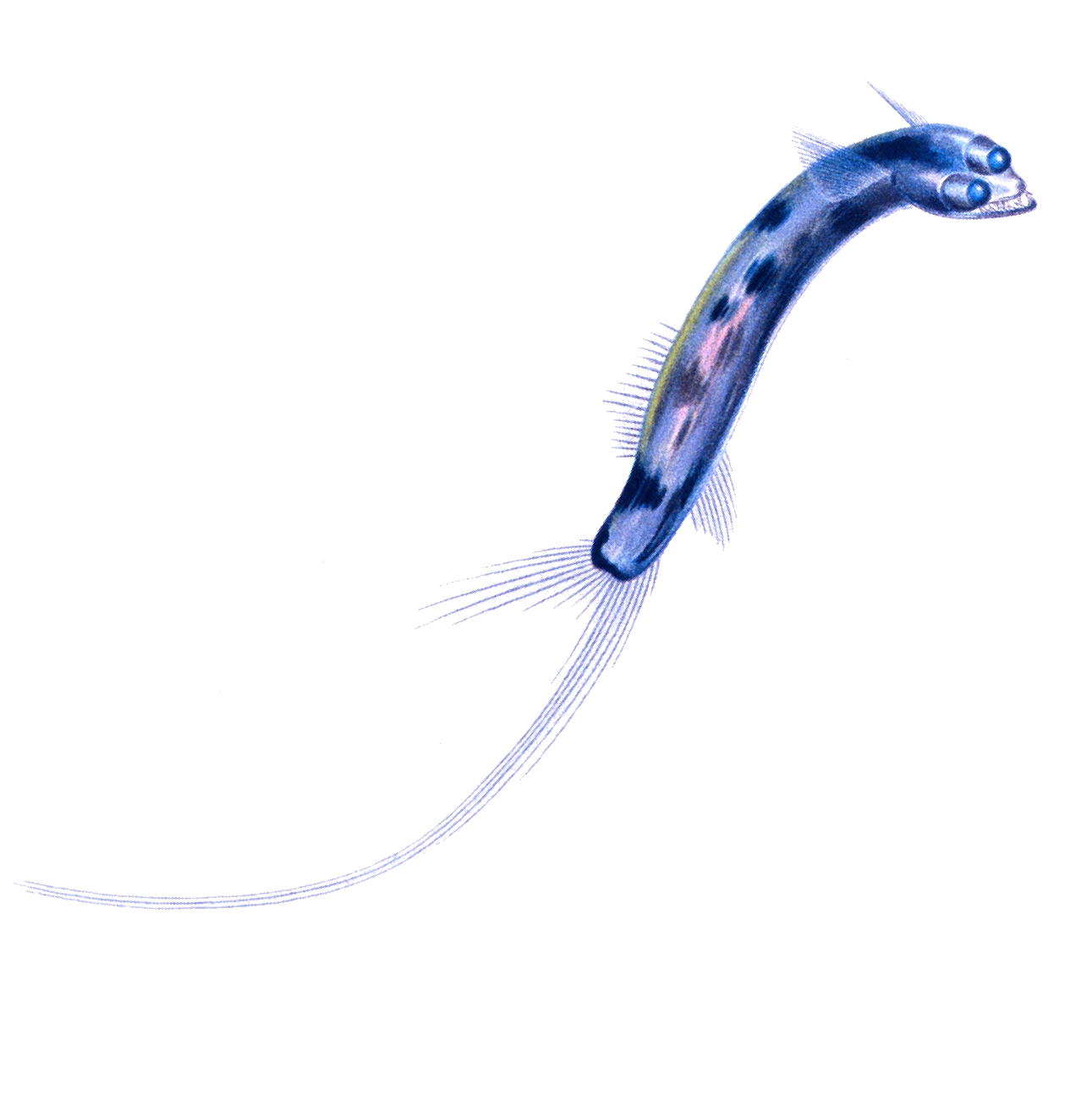TELESCOPEFISH

Peter Konstantinidis
Latin name: Gigantura chuni
The telescopefish occur circumglobally in tropical and subtropical waters in depths between approximately 500-2000 meters. The most striking adaptation to a life in the deep-sea are the conspicuous tubular eyes. These highly adapted eyes allow the telescope fish to detect prey in the mesopelagic twilight zone. Because the eyes would seem to be most advantageous if directed towards the surface to sense the silhouette of prey against the remaining rest light from above, it is speculated that these fishes oriented themselves vertically in the water column. Because deep-sea fishes are difficult to study, not much is known about the abundance and population size.
Did you know? The species undergoes one of the most drastic transformations known in fishes. The transformation is so drastic that when the first larva was described in 1954 it was believed to be a new species rather than the larval form of a telescopefish that were known to science since 1901. Telescopefishes have an amazing jaw apparatus that allows them to swallow prey that is larger than their own body size, which is then folded in half to fit in their expandable stomach.
Publications:
Konstantinidis and Johnson, 2017. Osteology of the telescopefishes of the genus Gigantura (Brauer, 1901), Teleostei: Aulopiformes. Zoological Journal of the Linnean Society
